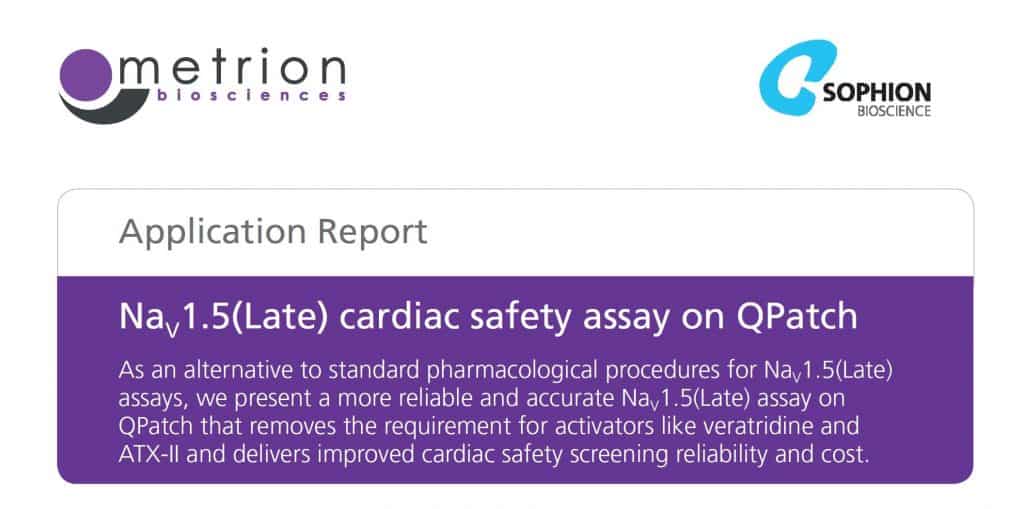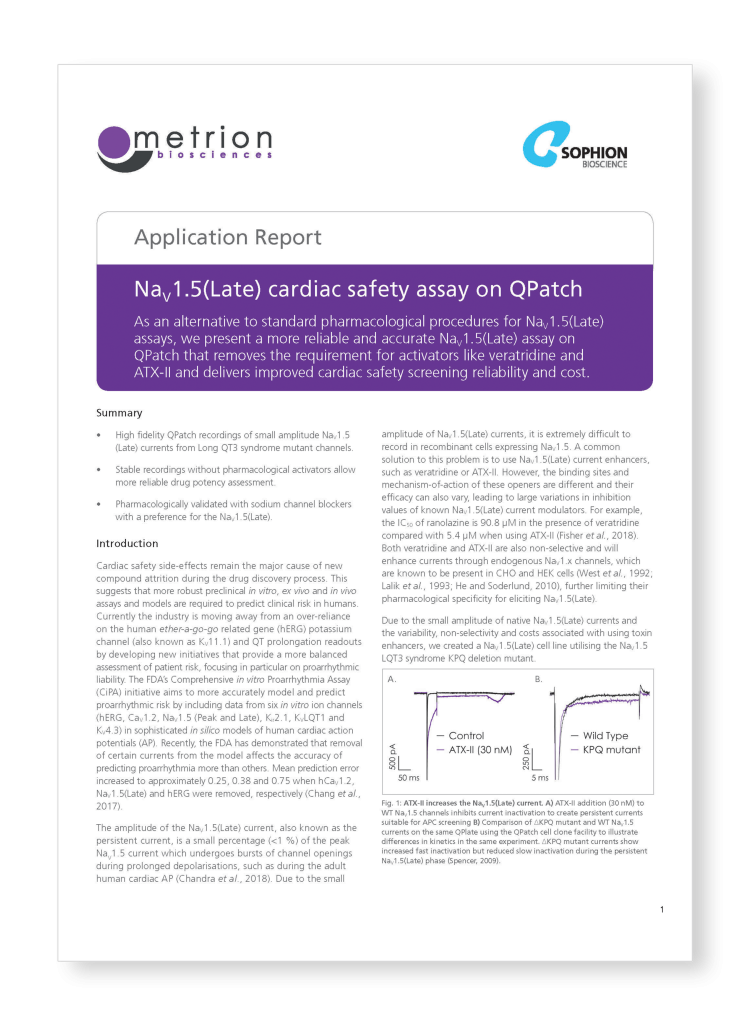Written by the Editor
The Metrion Biosciences team have recently produced a second application note in collaboration with Sophion Bioscience, describing the use of a ∆KPQ LQT3 mutant to create and validate a Nav1.5 (Late) cardiac safety assay on QPatch 48. Herein, we aim to provide a more reliable and accurate Nav1.5(Late) assay, which removes the requirement for costly activators such as ATX-II and delivers improved screening reliability.

Why do we need to better predict proarrhythmic risk?
Due to the ongoing need for more robust preclinical in vitro, ex vivo and in vivo models and assays to predict clinical cardiac safety risks in humans, new initiatives providing a more balanced assessment of patient risk are being developed. The FDA’s Comprehensive in vitro Proarrhythmia Assay (CiPA) paradigm, which aims to more accurately model and predict proarrhythmic risk, is driven by a panel of in vitro ion channel assays (hERG, Cav1.2, Nav1.5 (Peak and Late), Kir2.1, KvLQT1 and Kv4.3), coupled with in silico modelling of human cardiac action potentials (AP).
Why the Nav1.5(late) current?
Due to the small amplitude of native Nav1.5(Late) currents toxin enhancers are often used to increase the signal to noise ratio in electrophysiology assays. However, poor selectivity, cost and batch to batch variability observed when using toxins such as ATX-II means this approach is suboptimal for routine screening.
What did assay validation include?
Metrion therefore tested various voltage protocols typically used to evoke Nav1.5(Late) currents on a newly created Nav1.5(Late) stable cell line, utilising the Nav1.5 LQT3 syndrome KPQ deletion mutant. Assay validation included voltage protocols such as the CiPA protocol, an action potential like waveform and step ramp protocols.
Each was compared on the HEK Nav1.5 ∆KPQ cell line on QPatch 48, with the step ramp protocol selected for optimisation to create a stable Nav1.5(Late) current assay. This assay was then validated by testing two known Nav1.5(Late) blockers, mexiletine and ranolazine, both of which showed a preference for inhibiting the late current compared with peak inward current.
Final remarks
In summary, the need for a reliable Nav1.5(Late) current assay is required on APC platforms to provide accurate cardiac safety data to support in silicomodels of proarrhythmic risk. Metrion created and validated a novel assay using a ∆KPQ LQT3 mutant which should remove the requirement for pharmacological enhancers of Nav1.5(Late) and thereby deliver improved cardiac safety screening reliability and cost per data point.
Learn more
The full application note can be found here. You can contact our cardiac safety experts or request further information via info@metrionbioscienes.com.
Metrion would like to thank Thomas Binzer and the Sophion Biosciences team for their support and involvement in making this application note possible.

Metrion Bioscience and Sophion Bioscience
